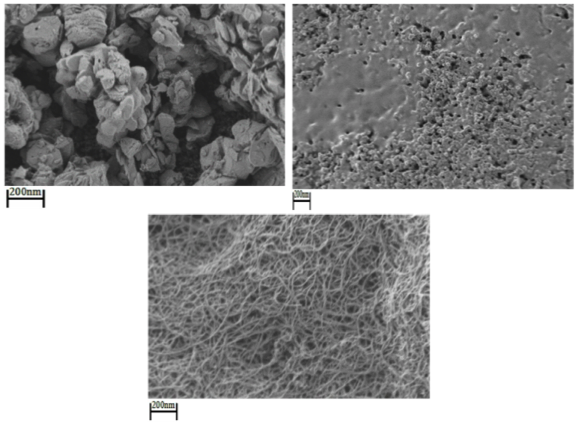Label-free detection of anti-prostate-cancer drugs
Contacts:
Nima Aliakbari, PhD Student, EPFL-IC-LSI
Sandro Carrara, Lecturer and Senior Scientist, EPFL-IC-LSI
Presentation:
The work can be classified into four main objectives:
- Study the effect of physical and electrical properties of MWCNTs, semiconductive nano-particles, and conductive nano-particles on the quantum electron transfer.
- Optimisation of cytochromes immobilisation protocols onto precursor nano-structured thin films to enhance specificity and sensitivity of the sensors.
- Exploration of the immobilisation of new types of synthetic proteins for drugs detection.
- Electrochemical measurements (potentiometric and impedimetric) on the fabricated nanobiosensors to identify the best detection technique in purified and spiked samples.

SEM images of the surface of working electrodes functionalized by top-left: Bi2O3 NPs, top-right: Au NPs, bottom: MWCNTs
Procedure:
After identification of appropriate drugs for treatment, biosensors are developed by drop-casting multi walled carbon nano tubes on the surface of sensors’ working electrode. Then they are bio-functionalized by immobilizing suitable proteins for specific detection of early identified drugs. At the end, the electrochemical drug detection is carried out by produced nano-biosensors.